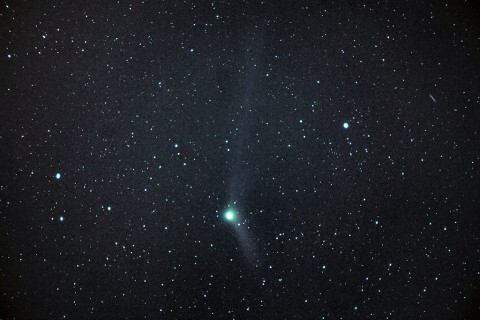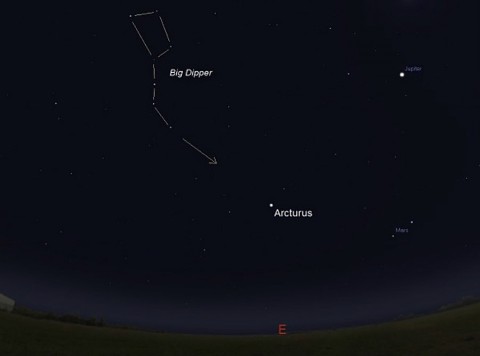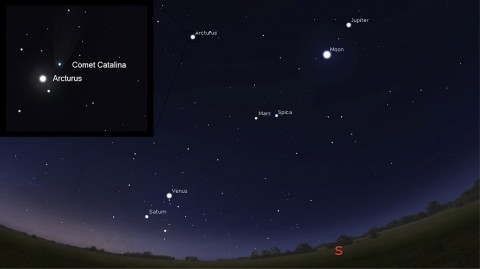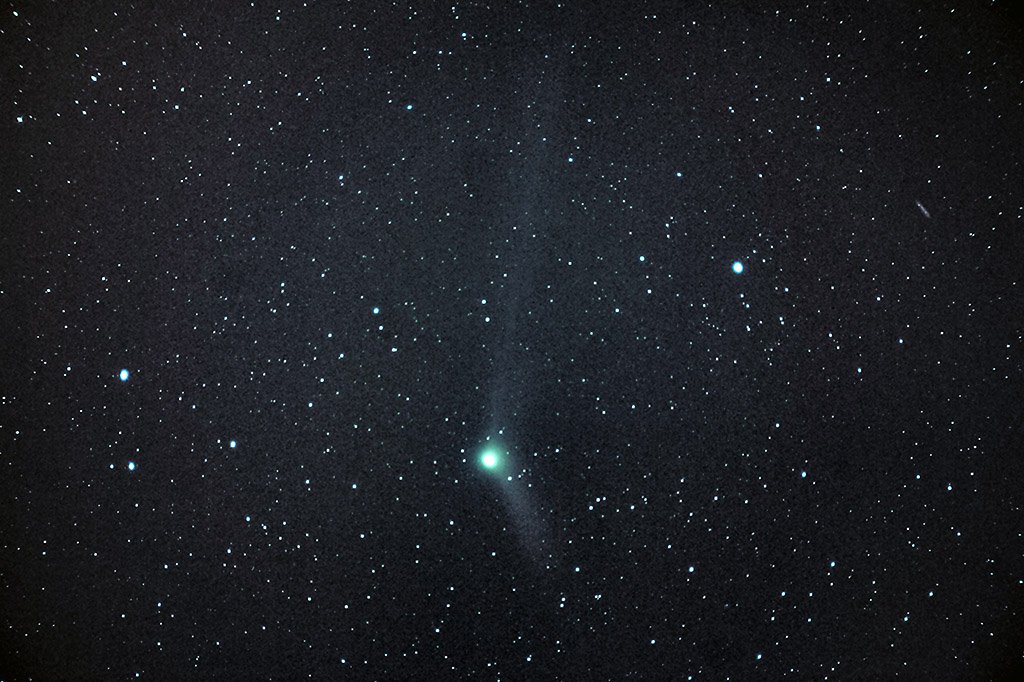NASA Headquarters
 Washington, D.C. – Did you get a telescope or pair of binoculars under the Christmas tree? If so, you can put them to the test by searching the Eastern sky for a view of a fuzzy comet on or shortly after New Year’s Day.
Washington, D.C. – Did you get a telescope or pair of binoculars under the Christmas tree? If so, you can put them to the test by searching the Eastern sky for a view of a fuzzy comet on or shortly after New Year’s Day.
Comet Catalina, formally known as C/2013 US10, is currently perched in the pre-dawn skies as it returns to the depths of space following a recent visit to the inner part of our solar system. Named for the NASA-funded Catalina Sky Survey at the University of Arizona in Tucson, the comet was discovered on October 31st, 2013.

The passage of a relatively close star or fluctuations of gravitational tides from within our Milky Way galaxy can send these icy bodies on a journey inward.
Comet Catalina is a first-time visitor to the inner solar system, having reached perihelion (its closest point to the sun) at a distance of 76 million miles (122 million kilometers) on November 15th.

As it slingshotted past the sun, the comet reached a velocity of 103,000 miles per hour (166,000 kilometers per hour) – almost three times faster than NASA’s New Horizons spacecraft as it flew past Pluto. Due to its high velocity, the comet is predicted to be on an escape trajectory from the solar system, never to return.
 Weather permitting, the eastern pre-dawn sky provides an opportunity to see this faint interloper over the next few weeks.
Weather permitting, the eastern pre-dawn sky provides an opportunity to see this faint interloper over the next few weeks.
Unfortunately, the waning gibbous Moon will pose a challenge for skywatchers to locate Comet Catalina. At minimum, binoculars are required to view the comet, which will appear as a fuzzy envelope of ice and dust, known as a coma.
Perhaps the simplest way to find Comet Catalina is to first locate the Big Dipper in the pre-dawn sky. Note how the handle forms a sort of ‘arc.’ That ‘arc’ can be followed to the orange giant star known as Arcturus which, for those in the Northern Hemisphere, is the second brightest star in the sky and relatively easy to identify.
Guide to Arcturus

Comet Catalina on New Year’s Morning

On New Year’s Day morning, January 1st, the comet will pass a mere 0.5 degrees – about the width of the moon – to the west of Arcturus. So if you head outdoors 60-90 minutes before dawn, let Arcturus serve as your guidepost (one ‘moon-width’ away) to find the faint, fuzzy patch of Comet Catalina. Of course, for optimal viewing, it’s recommended that you observe away from streetlights and city skyglow.
On January 6th and 7th, the waning crescent moon slips by the planetary pair. And on the morning of January 8th, Venus and Saturn are separated by a mere 0.4 degrees (less than one moon-width).
The celestial dance continues through January so that near month’s end, the five planets known as the ‘ancients’ span the sky from the southeast to the southwest in the morning twilight. In order (across the southern sky) these are Mercury, Venus, Saturn, Mars and Jupiter.




